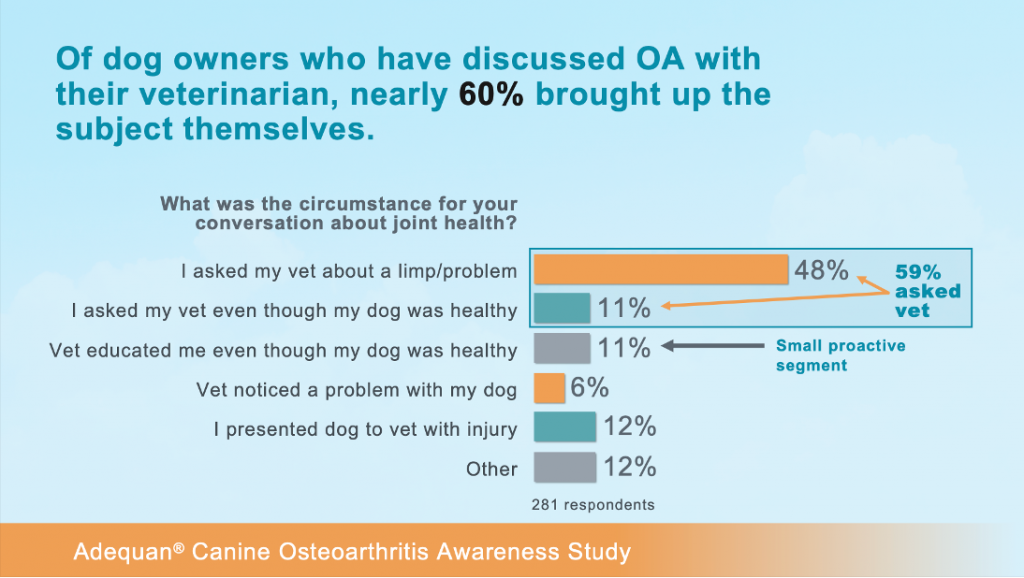7 Trends to Watch From the 2023 Veterinary Meeting & Expo
The weather might be a bit chilly in some parts of the U.S., but the 2023 Veterinary Meeting & Expo (VMX) trade show floor was hot this January in Orlando. North American Veterinary Community (NAVC) CEO Gene O’Neill estimates nearly 29,000 participated in VMX, Jan. 14-18. A likely cause: throwback pricing that locked registration at $125 for early-bird registrants.

With this record-breaking attendance, the conference buzz was strong around some of the key trends in animal health. Here are seven things to watch in 2023.
1: Pet owners are still spending on pets
While price increases are prevalent, pet owners are still spending despite inflation, according to the 2023 Brakke Industry Overview. Practice revenue is up, veterinary visits are down and veterinarians have addressed inflation with price increases. The next big challenge for veterinarians will be attracting new clients, a 2022 Veterinary Hospital Managers Association shows.
2: Consumerization continues in pet pharmacy
Pet owners are asserting more influence over their pets’ medical and wellness care. 22% of pharmacy sales leak out of the vet practice, says Candise Goodwin, a senior consultant with Brakke Consulting. While 66% of practices have an online store, two-thirds of practices reported their online store sales as a percentage of total pharmacy were 10% or less.
Goodwin cited lack of adoption at a clinic level as one potential cause. In addition, she says, chronic condition medications, food and parasiticides are largely a refill business pet owners have filled at their current retailers. These retailers offer the choices pet owners expect, such as same-day delivery, payment options and personalization engines to simplify shopping.
3: Hiring is getting harder in animal health
Turnover is up, and it’s taking longer to hire, says Jeff Santosuosso, a senior consultant at Brakke Consulting. About 60% of animal health companies didn’t reach their hiring goals in 2022. The slightly good news for animal health: This isn’t just an animal health trend. It’s a challenge other industries are facing as well as the power has shifted from companies to candidates and employees.
4. The practice acquisition bubble has burst
There were far fewer practices acquired in 2022 with Brakke estimating 300 to 500 acquisitions in 2022 compared to more than 1,000 in 2021. Still, with roughly 50 major veterinary consolidators operating today in North America, the expectation is that larger corporations will begin to absorb smaller ones. American Veterinary Medical Association data shows about 10% of practice owners say they plan to sell and retire in 2023.
Did you miss the 2023 Brakke Industry Overview? You can still attend their second presentation on Monday, Feb. 20, at WVC in Las Vegas. Learn more here.
5: Chagas disease poses a growing threat to dogs
Chagas disease is an emerging disease that threatens animal populations and spreads quickly, especially in large, multi-dog kennels, according to Sarah Hamer, M.S., Ph.D., DVM, DACVPM. During her session “Chagas Disease: The Spreading Threat That Kissing Bugs Pose to Our Patients” sponsored by Boehringer Ingelheim, she explained kissing bugs can carry Trypanosoma cruzi, the parasite that causes Chagas disease. This condition can lead to heart failure in dogs.
Kissing bugs live in natural environments that include downed natural material and animal trails, and they’re typically found in the southern United States, Dr. Hamer says. Because dogs travel with their owners and rescue groups will often transport southern states’ pets to shelters and homes across the country, Chagas is a concern for veterinarians nationwide. There are no vaccines and limited treatment options.
6: Allyship for women still lags
At the Women in Leadership and Management in Animal Health reception at VMX, Integrating Women Leaders Foundation CEO Kim Graham Lee shared results from the State of Allyship-In-Action Benchmark Study, the first nationally focused study to measure the perceived practice of allyship to women in corporate America today.
According to the study, 72% of women and 88% of men agreed that their organization was making great progress in advancing women into leadership roles. Also, 55% of women and 77% of men agreed that their organization was making great progress in advancing other underrepresented groups into leadership roles. But when it comes to taking action, data shows there is still room for improvement.

The top five microaggressions women respondents identified as happening to them always or frequently were:
- Being interrupted more often than others.
- Having their judgment questioned in their area of expertise.
- Not being given credit for contributions made.
- Being overlooked for a promotion or stretch assignment.
- Being asked to do “office work” i.e., schedule meetings, take notes, etc.
7: Osteoarthritis is a leading cause of euthanasia in larger breeds
Osteoarthritis (OA) is one of the top reasons pet owners request euthanasia, based on data collected by Lap of Love Hospice and In-Home Euthanasia. So it seems logical that OA conversations would be a big topic during veterinary visits. Not so, says a new study from American Regent Animal Health presented at a press event at VMX. About 51% of dog owners who participated in the Adequan® Canine Osteoarthritis Awareness Study said their veterinarian had never talked to them about arthritis or joint problems.

These are the some of the most common breeds that suffer from OA:
- Labrador retrievers
- German shepherds
- Golden retrievers
- Bulldogs
- Rottweilers
What other trends will 2023 bring? One thing’s for certain: On the high of their record-breaking attendance, NAVC announced intentions to offer $125 registrations for the 2024 VMX.
Portia Stewart is the former team channel director for dvm360 and former editor of Firstline magazine. She spent 19 years working in companion animal health media before joining Curious Plot as a senior consultant. Read more pet trends and veterinary insights from Curious Plot.
